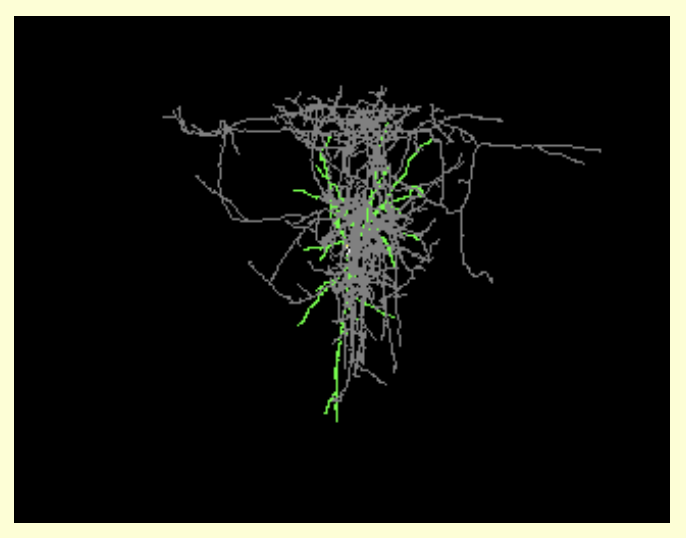URL: https://dilin.dcri.duke.edu/
Proper Citation: Drug-Induced Liver Injury Network (RRID:SCR_001524)
Description: Prospective and retrospective registry of well-characterized cases of drug-induced liver disease. The goals of Network include the development of standardized procedures to identify and fully characterize bona fide cases of drug- and complementary and alternative medicines (CAM)-induced liver injury, and to conduct controlled, clinical studies that will include extensive collection of data, serum, DNA, and tissue specimens. Cases of liver injury due to herbal medications are also included. The network will also develop terminology and standardized definitions for DILI, and to develop causality assessment instruments that are sensitive, specific, and reproducible. DILIN is funded by a cooperative agreement and includes five clinical centers and a central data coordinating center. The research goals of DILIN are to: * Create a registry of carefully documented DILI cases * Identify clinical, immunological, and environmental risk factors for drug- and CAM-mediated hepatotoxicity * Create a bank of biological specimens consisting of DNA, plasma, and immortalized lymphocytes to facilitate detailed genetic analyses * Characterize the natural history of drug- and CAM-induced DILI for at least six months following enrollment * Develop the capability to recontact these individuals over an extended period of time so that additional studies exploring DILI mechanisms can be performed Two studies are being initiated by the network. In the Retrospective Study, the implicated drugs are restricted to isoniazid, phenytoin, combination clavulanic acid/amoxicillin, and valproic acid (Depakote), Nitrofurantoin, Trimethoprim-sulfamethoxazole, Minocycline, and Quinolone antibiotics. These drugs were chosen because they are frequently administered to patients not receiving other hepatotoxic drugs, making it easier to establish causality. Patients must be alive, and the date of onset of the DILI episode must be on or after January 1, 1994. In the Prospective Study, all incident cases of drug- and CAM-induced liver injury are being considered. Initial presentation to a healthcare professional must be within the previous six months. A detailed medication history of the implicated DILI drug together with all prescription, OTC, and herbal medications is being recorded. Liver and serological tests are being performed to characterize the injury and to exclude competing causes of liver injury. A blood sample is also being drawn for plasma storage and DNA isolation. These cases will be followed longitudinally to characterize the long-term effects of the DILI episode. For both studies, documented, clinically significant DILI must be recorded in the patient's medical charts so that a causal determination can be made. Patients will be excluded if they are unwilling or unable to provide a blood sample or participate in the genetics component. Children under two years of age at the time of enrollment are excluded due to blood-volume requirements. If you have patients who are eligible to participate in either study, please contact one the DILIN clinical sites. As a general policy, the National Institute of Diabetes and Digestive and Kidney Diseases (NIDDK) invites investigator-initiated research project applications for ancillary studies to ongoing, large-scale clinical trials, epidemiological studies, and disease databases supported by the Institute. These studies are focused on a wide range of diseases and conditions including diabetes, obesity, acute and chronic liver disease, chronic kidney disease, and benign prostatic hyperplasia, among others.
Abbreviations: DILIN
Resource Type: material resource, biomaterial supply resource
Keywords: prescription drug, over-the-counter drug, alternative medicine, herbal product, supplement, serum, dna, tissue, blood, immortalized lymphocyte, drug, medication, quinolone antibiotic, isoniazid, phenytoin, clavulanic acid, amoxicillin, valproic acid, depakote, nitrofurantoin, trimethoprim-sulfamethoxazole, minocycline, diagnosis, hepatotoxicity, risk factor, genetic analysis
Expand Allis listed by |
|
is listed by |
|
is listed by |
|
has parent organization |
We found {{ ctrl2.mentions.total_count }} mentions in open access literature.
We have not found any literature mentions for this resource.
We are searching literature mentions for this resource.
Most recent articles:
{{ mention._source.dc.creators[0].familyName }} {{ mention._source.dc.creators[0].initials }}, et al. ({{ mention._source.dc.publicationYear }}) {{ mention._source.dc.title }} {{ mention._source.dc.publishers[0].name }}, {{ mention._source.dc.publishers[0].volume }}({{ mention._source.dc.publishers[0].issue }}), {{ mention._source.dc.publishers[0].pagination }}. (PMID:{{ mention._id.replace('PMID:', '') }})
A list of researchers who have used the resource and an author search tool
Find mentions based on location

{{ ctrl2.mentions.errors.location }}
A list of researchers who have used the resource and an author search tool. This is available for resources that have literature mentions.
No rating or validation information has been found for Drug-Induced Liver Injury Network .
No alerts have been found for Drug-Induced Liver Injury Network .
Source: SciCrunch Registry





